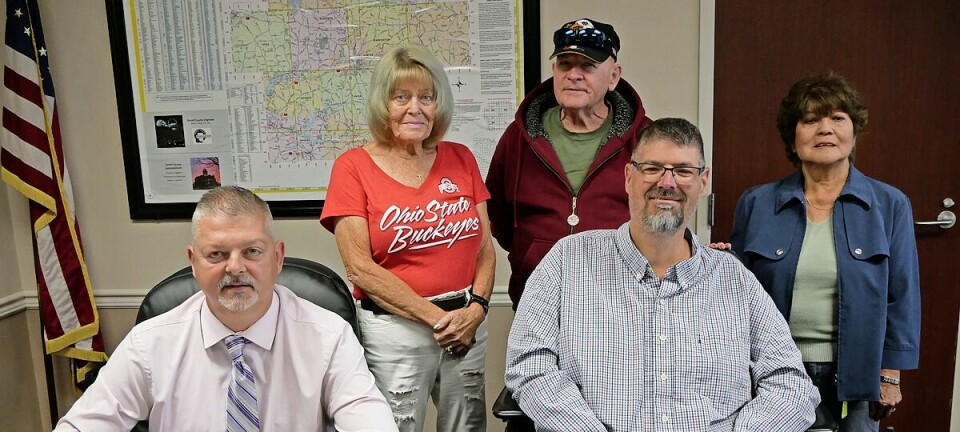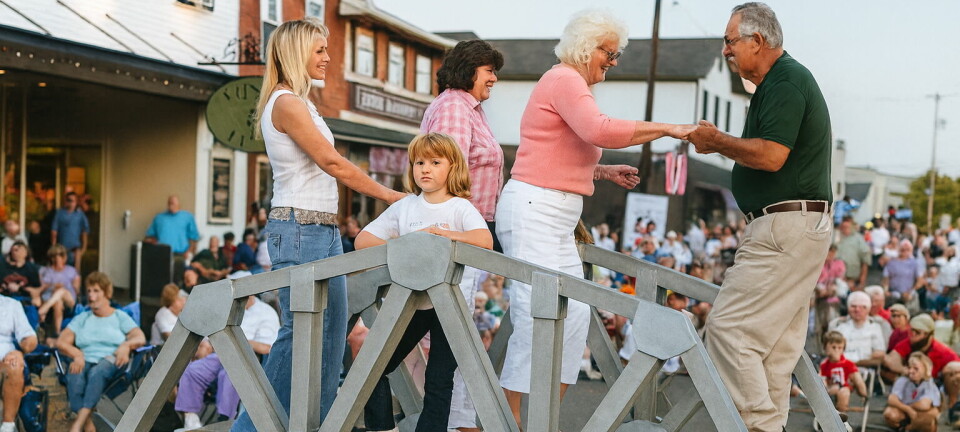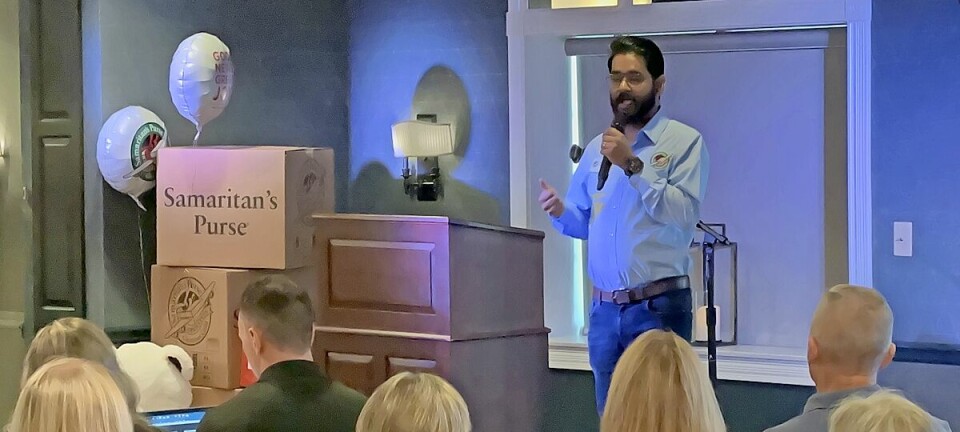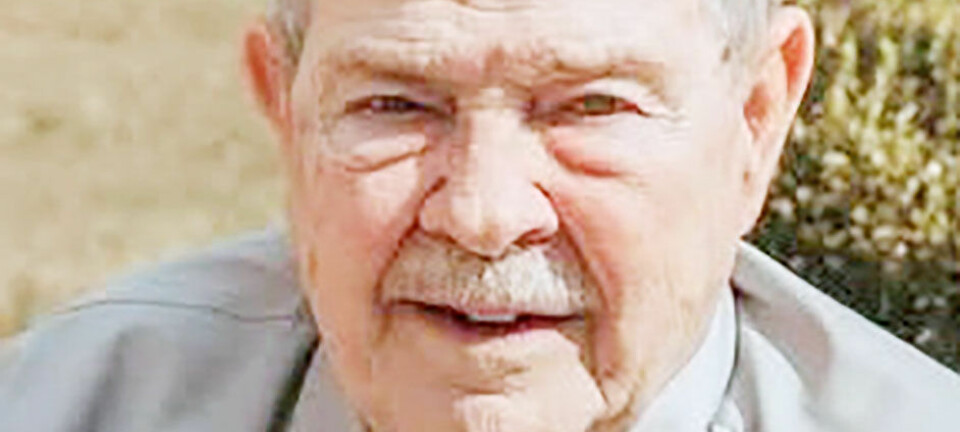State program commemorates legacy farms

Walter and Elly Rice of Wayne County can trace their farm back to Frederick Rice, whose family immigrated from Germany. Frederick Rice served with Gen. George Washington at Valley Forge during the Revolutionary War. On August 29, 1814, he received a patent deed signed by President James Monroe for 160 acres just west of New Pittsburg, which he then sold in 1819 to his son Christian for $500.
Two other sons, Simon and Barnhart, owned farms that are now part of OARDC. During the 202 years of farming, the Rice family grew potatoes; raised hogs, beef cattle and champion Belgians; and milked cows.
Today Walter and Elly Rice's son Joe, representing the seventh generation, grows corn and soybeans with Rhett, the eighth generation of the Rice family to tend the ancestral lands.
To commemorate legacy farms like the Rice's, a program was designed in 1993 to honor family farms that have been continuously owned by one family 100 years or more. Currently there are about a dozen Wayne County farms enrolled, which is administered by the Ohio Historic Family Farm Program and sponsored by the Ohio Department of Agriculture.
The Rice farm would qualify as a sesquicentennial farm, one that has been owned by the same family for at least 200 years. There is no cost to enter, but you must supply the deed chain and the application.
“Although we have the original deed and the farm has always been in the Rice family, it was too hard to trace the deeds, so we made our own sign,” Elly Rice said.
Remnants of the long history of the Rice farm include two grinding stones. The large one is believed to be from a grist mill that once operated beside Fox Run that flows through the farm. Walter said you can still see a remnant of the old mill race. A smaller stone is believed to be from a fulling mill that was used to clean sheep fleece.
Researching the transfer of property can be rewarding and educational but may take some time and persistence.
“Mornings are usually a good time, but any time is fine. We are open Monday through Friday from 8 a.m. to 4:30 p.m.," said Jane Carmichael, Wayne County recorder. "There are four of us, and we will certainly guide you in the right direction. We don't charge for landowner copies. You can find the owners and years they had the property in the map office and trace it to the original deed.”
Erin Dillon, program administrator for the Ohio Historic Family Farms Program, said to contact the county recorder's office to tell them you want to research your farm's deed history.
“Ask if there is a day of the week and time of day that might be better suited for your work. Take a copy of your current deed with you if possible. Familiarize yourself with two terms used in deeds: grantee, the person purchasing the property, and grantor, the person selling the property,” Dillon said.
Holmes County resident Camille Nowels owns one of the nearly 1,800 Ohio Historic Family Farms across the state.
"The process of becoming an Ohio Century Farm was a fun project," Nowels said. "First, I had to trace the deeds back and show they are related to me/my family. Looking up the deeds went so well that I was able to trace the land back to 1803 when Thomas Jefferson deeded ‘my’ land to a Revolutionary War soldier for meritorious service."
Nowels said there was further investigation. "That completed, I worked to find old photos of relatives on this land. The people who do the Heritage Farm designation really want to see the family farming through the years. I had pictures of multiple generations farming this land: some with horses and others with tractors. And finally they like to know any interesting tidbits that make the story of your land interesting. In my case I discovered that the Greenville Treaty Line runs right through my family’s land. All in all it was a fun adventure. I learned a lot, enjoyed working with the deeds people and would do it again in a heartbeat.”
According to Dillon, the intent of the Historic Family Farm Program is to honor the agricultural, economic and social contributions of Ohio's hardworking farm families. More and more families qualify for historic status every year, and the program serves as a benchmark for farmers to strive toward. It aims to pay tribute to the strength and tenacity of the family farmers who have endured through the years to continue their commitment to agriculture.
In order to enroll in the program, the farm must be documented to be in the same family for at least 100 years. Complete copies of deeds showing the transfers between generations of the family are required with each registration. Ohio Department of Agriculture staff will check the deeds to ensure consistency of the property description and also look for an unbroken chain of title with your family.
“In 26 years we’ve seen this program grow from eight recipients in its inaugural year to nearly 1,800 registered farms today," Dillon said. "The level of enthusiasm from farm families receiving their historic designations is indisputable. The successes of the Historic Family Farms Program can be solely attributed to families who proudly continue their farming heritage. It’s our duty and honor to acknowledge that perseverance."
Each family receives an heirloom certificate signed by Gov. Mike DeWine and Ohio Department of Agriculture director Dorothy Pelanda to keep with their historic documents and to pass down to future generations.
Although the program is free and voluntary, signs are available for purchase for $52.25.
A complete list of Ohio’s bicentennial (200 years or more), sesquicentennial (150-199 years) and century farms (100-149 years) is available at www.agri.ohio.gov/wps/portal/gov/oda/divisions/markets/resources/historic-family-farms-search.
For more information call Dillon at 614-752-4505 or email Erin.Dillon@agri.ohio.gov.

























